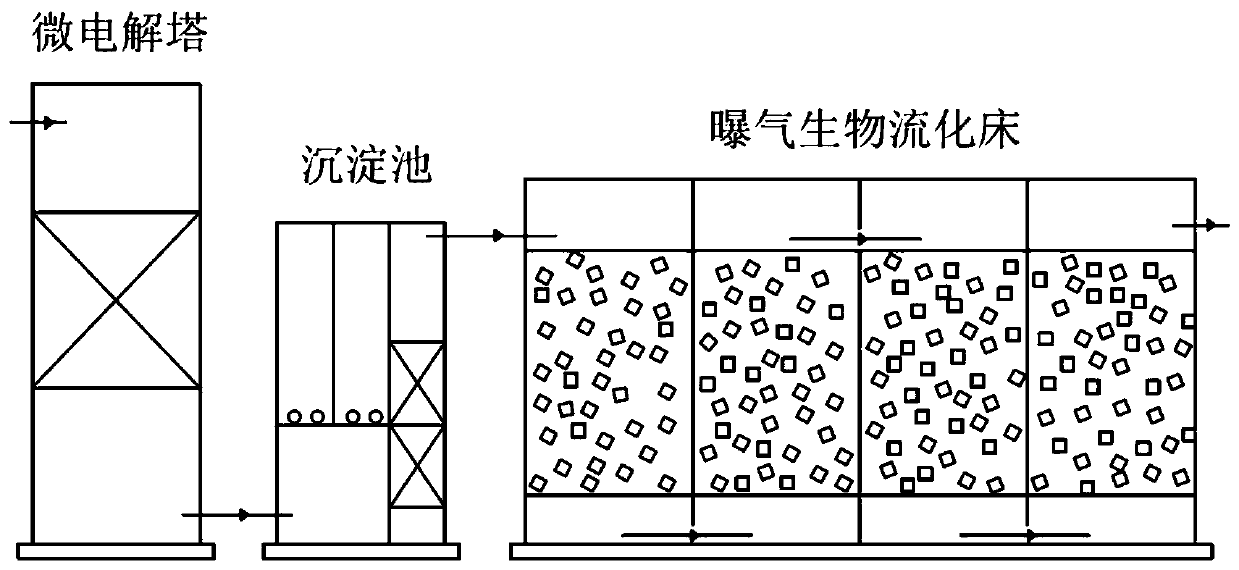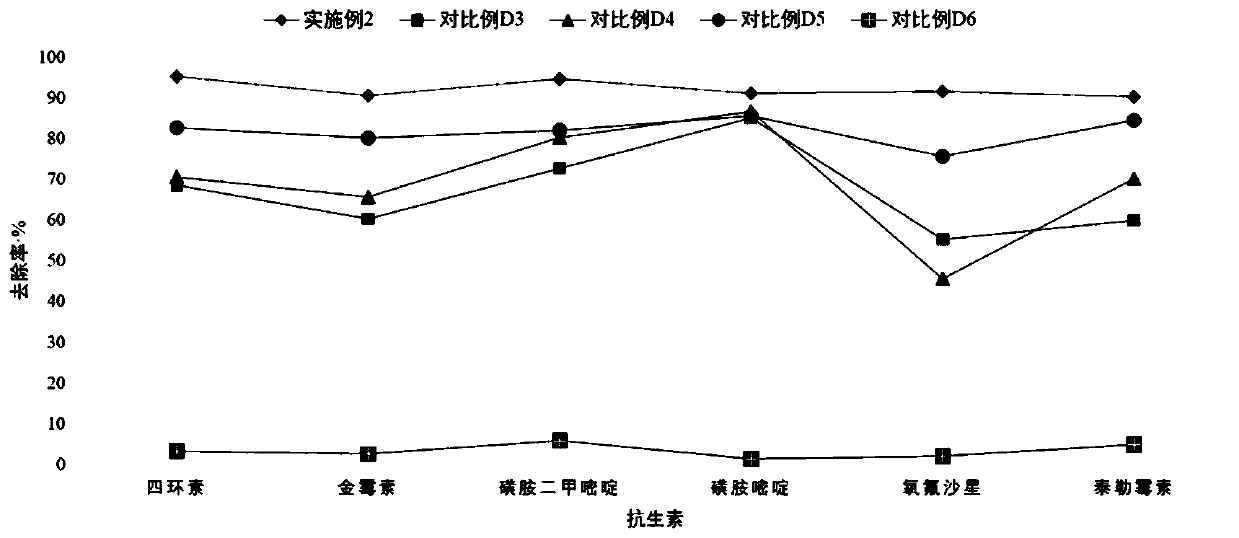Method for efficiently treating high-density breeding environment wastewater
A high-density, waste water technology, applied in the direction of filtration treatment, water/sewage treatment, aerobic process treatment, etc., can solve problems affecting soil quality and plant growth, deterioration of breeding environment, large total amount, etc., to improve safety and reliability Applicability, expansion of application field, effect of reducing the concentration of antibiotics
- Summary
- Abstract
- Description
- Claims
- Application Information
AI Technical Summary
Problems solved by technology
Method used
Image
Examples
Embodiment 1
[0068] This embodiment provides a passivating agent, the passivating agent is modified zeolite supported nano-zero-valent iron, which is specifically prepared by the following method:
[0069] a) Preparation of modified zeolite: Add a sufficient amount of cetyltrimethylammonium bromide solution with a concentration of 24mmol / L to the natural zeolite, shake and react at 60°C and 80r / min for 20min, and filter out with Wash with absolute ethanol and deionized water for 4 times, dry, grind and pass through a 60-mesh sieve;
[0070] b) Add the modified zeolite to 58°C, 1mol / L NaOH solution according to the ratio of solid to liquid 1:18 (g / mL), stir at a low speed such as 60r / min for 15min, filter out and wash until neutral Dry at 60°C;
[0071] c) Prepare an ethanol-water solution with a volume ratio of 2:1, and add FeSO at a mass volume ratio of 1:50 (g / mL) 4 ·7H 2 O, add 6000-PEG according to the mass volume ratio of 1:1000 (g / mL), then add the modified zeolite obtained in ste...
Embodiment 2
[0074] This embodiment provides a method for efficiently treating high-density aquaculture environment wastewater, which specifically includes:
[0075] 1) Add the passivating agent described in Example 1 to the livestock and poultry wastewater in the breeding environment, and then conduct ionizing radiation treatment to obtain livestock and poultry manure water I;
[0076] 2) Livestock and poultry waste water I is subjected to micro-electrolysis / aerated biological fluidized bed reaction to obtain livestock and poultry waste water II;
[0077] 3) Add brine to livestock wastewater II, adjust the pH value of the system to 8-10, perform struvite crystallization treatment, and filter to obtain livestock wastewater III;
[0078] 4) Adjust the pH value of livestock and poultry wastewater III to 5-9, add hydrothermal carbon loaded with hydrated iron oxide to adsorb nitrogen and phosphorus, and discharge the treated liquid after the adsorption is completed;
[0079] Wherein, the pass...
experiment example 1
[0114] Experimental example 1: Ability to degrade antibiotics:
[0115] The method of high performance liquid chromatography / mass spectrometry is used to detect the concentration of antibiotics in the treated high-density aquaculture environment wastewater in each example of Example 2 and Comparative Examples D3 to D6, and compare the antibiotics in the high-density aquaculture environment wastewater before treatment Concentration to calculate its corresponding degradation rate, statistical results such as figure 2 shown. Depend on figure 2 It can be seen that the passivator of the present application is more significant in the removal and degradation of antibiotics such as tetracyclines, sulfonamides, quinolones and macrolides in the aquaculture environment wastewater, and can degrade and remove more than 90% (Example 2) of antibiotic residues.
PUM
 Login to View More
Login to View More Abstract
Description
Claims
Application Information
 Login to View More
Login to View More - R&D
- Intellectual Property
- Life Sciences
- Materials
- Tech Scout
- Unparalleled Data Quality
- Higher Quality Content
- 60% Fewer Hallucinations
Browse by: Latest US Patents, China's latest patents, Technical Efficacy Thesaurus, Application Domain, Technology Topic, Popular Technical Reports.
© 2025 PatSnap. All rights reserved.Legal|Privacy policy|Modern Slavery Act Transparency Statement|Sitemap|About US| Contact US: help@patsnap.com


